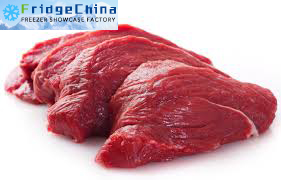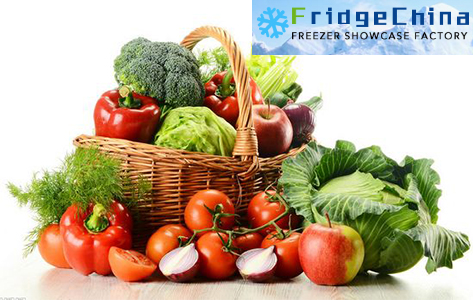Best Solution For Ice Cream,Meat, Fruit And Frozen Foods
Nowadays, urban people are busy with work. They rarely have time to go to the supermarket. Many people choose to buy the foods for a week or even a month when they go shopping in the supermarket and store them in the refrigerator. Do they really know the best temperature for meat, fruit, ice cream and frozen foods? The result is that many foods had been corrupted in a few days, causing a lot of waste. Therefore, don’t think that the foods you bought will always be fine in the refrigerator. It is good to know some common sense of food preservation. Below we will introduce you the best storage temperature for several major types of foods.

1. Best Temperature for Ice Cream
The storage temperature and conditions of ice cream are directly related to its taste and food safety. Generally speaking, the refrigerating temperature of ice cream is below -18 ̊C (-0.4 ̊F). Most supermarkets use professional upright freezers and chest freezers to store the ice cream. However, some retail stores can’t fully meet the requirements. They even mix ice cream and other frozen foods in the same freezer. This is unsanitary and easier to leave a safety hazard. The ice cream will absorb the smell of other foods which affects the taste. You better pack the ice cream individually in a separate freezer drawer to reduce the risk of deterioration and smell. If you are an ice cream lover and you always store ice creams at home, buy an additional freezer. There are a lot of mini-freezers specially designed for ice cream in the market, saving space and meeting your needs.

2. Best Storage Temperature for Meat
Pork, Beef, Lamb, Poultry: -14 ̊C~-18 ̊C (-0.4 ̊F~6.8 ̊F)
Fish & Other Seafood: -7 ̊C~-10 ̊C (14 ̊F~19.4 ̊F)
Egg: -1 ̊C~1 ̊C (30.2 ̊F~ 33.8 ̊F)
It is important that meat is not suitable for storage after thawing. Due to the action of water crystallization, the cells of frozen meat have been destroyed. Then destroyed tissue cells will seep out a lot of nutrients, which will become nutrients for bacterial reproduction. Experiments have shown that the decay speed of a frozen yellow croaker placed at a temperature of 30°C (86°F) for 6 hours is twice of the fresh yellow croaker’s. If you place defrosted egg yolk at 18 ̊C (64.4 ̊F) for 2 hours, the number of bacteria will increase about two Times. And after 8 hours of storage, the number of bacteria will increase 50 times.

3. Best Storage Temperature for Fruit
Most fruits originating from temperate and cold zones require a storage temperature of about 0 ̊C (32 ̊F), such as apples, pears, and peaches. Most fruits originating in tropical and subtropical regions require temperatures above 0 ̊C (32 ̊F), such as bananas and mangoes. If the storage temperature is higher than the optimum temperature, the aging process will accelerate and the storage period will become short. If the storage temperature is lower than the optimum temperature, the cold damage will occur. The critical temperature of storage varies from species to species.
Recommended Storage Temperature For Fruits

Many fruits are not suitable for storage in the refrigerator, especially tropical fruits such as mango, lychee, and banana. Once the mango is in the refrigerator, it will start to appear dark spots on the surface in a few days. When the lychee is in the environment of 0 ̊C (32 ̊F), its skin will turn black and the flesh will taste bad. The banana is easy to turn black and rot, and even cause mildew if it is in the environment below 12 ̊C (53.6 ̊F). In addition to tropical fruits, berry fruits such as persimmons will have a reduced aroma and a deterioration of the epidermis at low temperatures. These fruits are not suitable for refrigerator storage for fresh-keeping purposes.

4. Best Temperature for Vegetable
Most rhizomes and leafy vegetables are suitable for storage at temperatures close to freezing point. However, if some other vegetables are put into the refrigerator, they can not get the preservation effect. It will result in cell damage, loss of vitamin C and other nutrients, and even they are more susceptible to spoilage. For example, the optimal temperature for pumpkin is above 10 ̊C (50 ̊F). It will soon become soft in the refrigerator and will grow hair and be sticking, losing its original flavor. The best way to store these vegetables at room temperature and under such 60% humidity. Therefore, even though you do not put them in the refrigerator, you need to seal them with a clean storage bag or put them in a sealed container to prevent the loss of water from vegetables.
Recommended Storage Temperature For Vegetables






